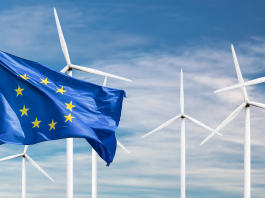Giorgio Corbetta, EU Affairs Director at EUROBAT, explains how the global battery value chain has developed and outlines the potential of the Green Deal Industrial Plan.
When US President Joe Biden signed into law the Inflation Reduction Act (IRA) in August last year, industry and policymakers around the world were largely taken by surprise. At EUROBAT, we often give our take on European Union (EU) and global policy and market trends, but none of us could have predicted the astonishing flow of requests for comment that would have hit us since then. Batteries have indeed been making headlines since, as the US plan earmarked $500bn for clean energy and healthcare and made funds accessible in a consistent framework.
Indeed, while the total amount of subsidies is higher in the EU across cleantech manufacturing and renewable energy deployment ($245bn against €835bn in the EU), one added value of the IRA is the simplicity of the process to access the funds. In the EU, funds are distributed through several programmes, and red tape means investors do not always have enough visibility to commit resources to battery projects in the EU.
How the outlook on the global battery value chain has changed
Despite potentially luring battery players to invest in the US, as opposed to Europe and other jurisdictions, the IRA has also had the merit of bringing EU industrial policy back into the spotlight. In fact, the last strategic plan by the European Commission on batteries dates back to 2017 and clearly does not reflect the current policy, market, and geopolitical context.
Such context has dramatically changed in at least three ways. Firstly, after more than a decade, the cost of batteries has, in fact, increased for the first time in 2022, largely because of higher raw material costs. The growing demand for battery materials, also driven by decarbonisation policies across jurisdictions, has further put pressure on materials demand.
Second, the global pandemic, the war in Ukraine, and rising geopolitical tensions between China and the West have worsened the outlook for international trade. This has affected the battery value chain, which, by its nature, is global.
Thirdly, while a compromise will possibly be found to allow non-US-based battery players to benefit from the American subsidy package, the Inflation Reduction Act has introduced a competitive element that might dramatically alter the commercial relationship between the US and its allies, including the EU.

Batteries at the ESG test
In addition to the above, batteries remain confronted with significant sustainability challenges. This is notwithstanding of the great strides industry has made towards improving its sustainability (for instance, 90% of lead batteries are fully recycled in the EU).
Raw materials mining operations can lead to serious environmental damage if not properly conducted. There is the risk that mining and other activities along the value chain do not respect human rights, child labour regulations, and local communities’ rights. And finally, policies around the world are intensifying battery players’ due diligence responsibility towards other actors along the value chain, specifically around corruption, bribery, and financial misconduct.
The EU response: The Green Deal Industrial Plan
In February this year, the European Commission released its comprehensive response to the IRA: the Green Deal Industrial Plan. This entailed a loosening of the rules for Member States to support spending in critical value chains (Temporary Crisis and Transition Framework for State Aid), a new strategy on raw materials (Critical Raw Materials Act), and a plan to boost investments in net-zero technologies (Net Zero Industry Act).
The EU battery players welcomed the Commission’s plan as it explicitly recognises the critical role batteries play in the energy transition. Whilst most of our time over the next months will be devoted to assessing the impact of the combination of the measures in the EU plan, the battery industry’s primary consideration remains policy consistency.
The EU regulatory framework for batteries is exceptionally complex because multiple layers of legislation have been progressively introduced over the past decades. There is, in fact, legislation on batteries as a product, legislation regulating appliances and vehicles incorporating batteries, and horizontal legislation (such as sustainability legislation) affecting all sectors, including batteries and the industries that rely on batteries.
The threat looming ahead is that the implementation of the Green Deal Industrial Plan will lead to even more complexity. What we need now is not new legislation, but legislation that points in the same direction—moving Europe towards achieving the Green Deal objectives. Europe will succeed only if it leverages the potential of all battery technologies in a consistent fashion.
Please note, this article will also appear in the fourteenth edition of our quarterly publication.









